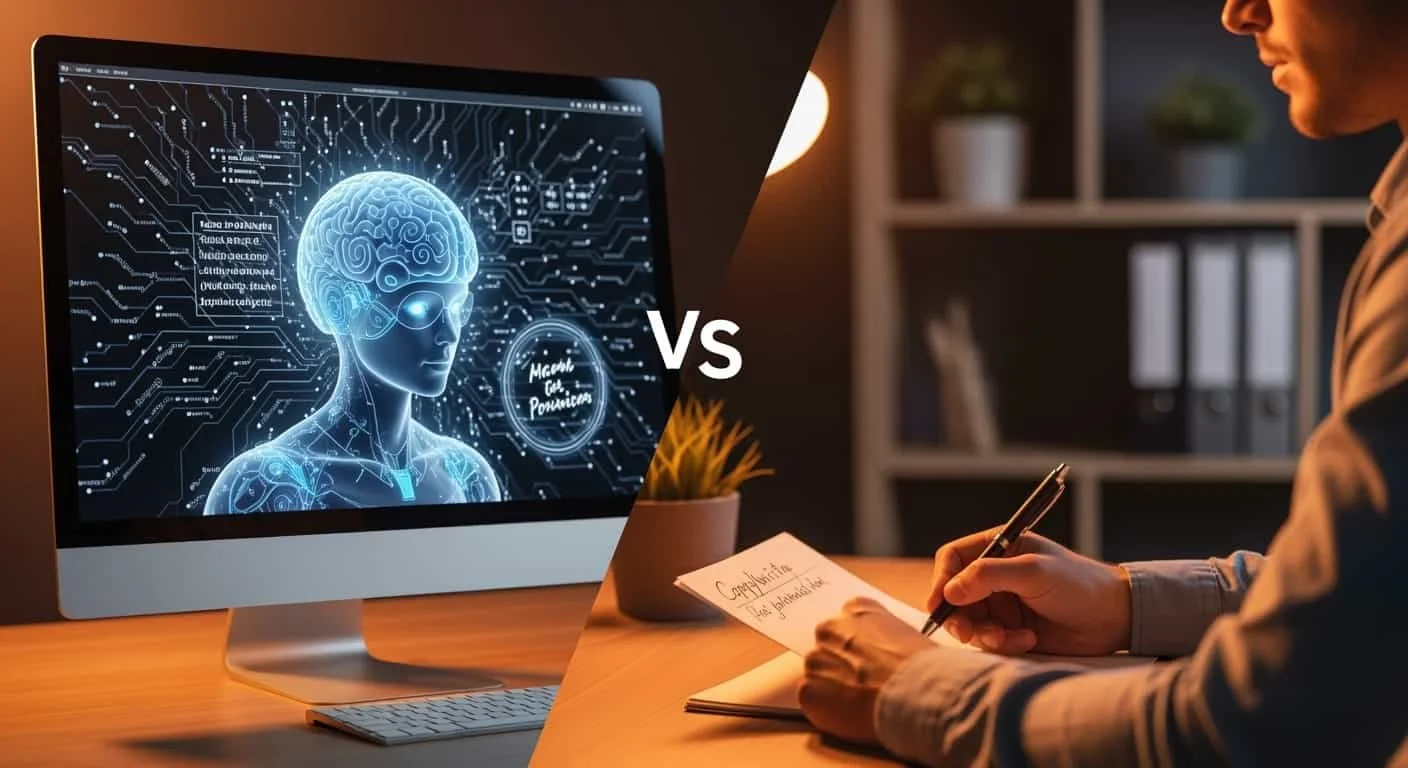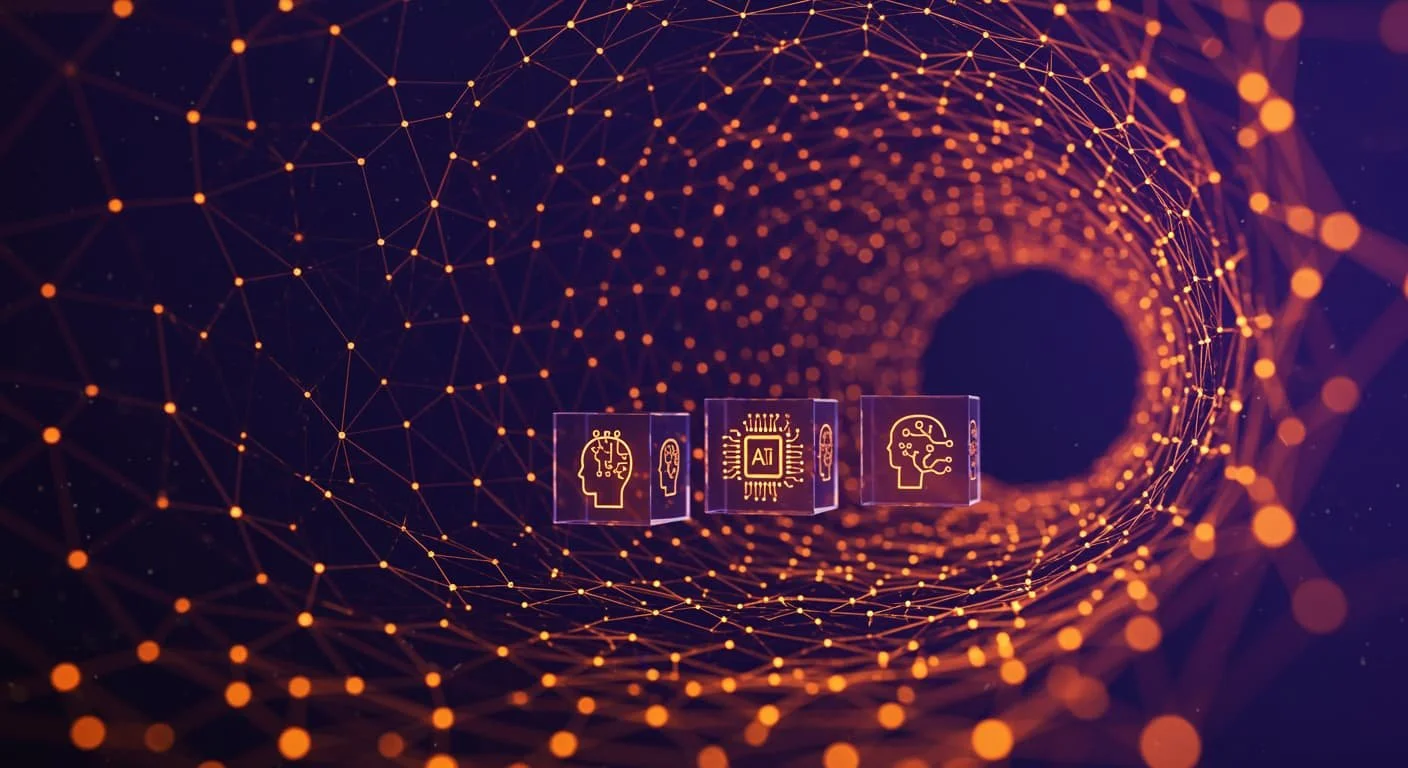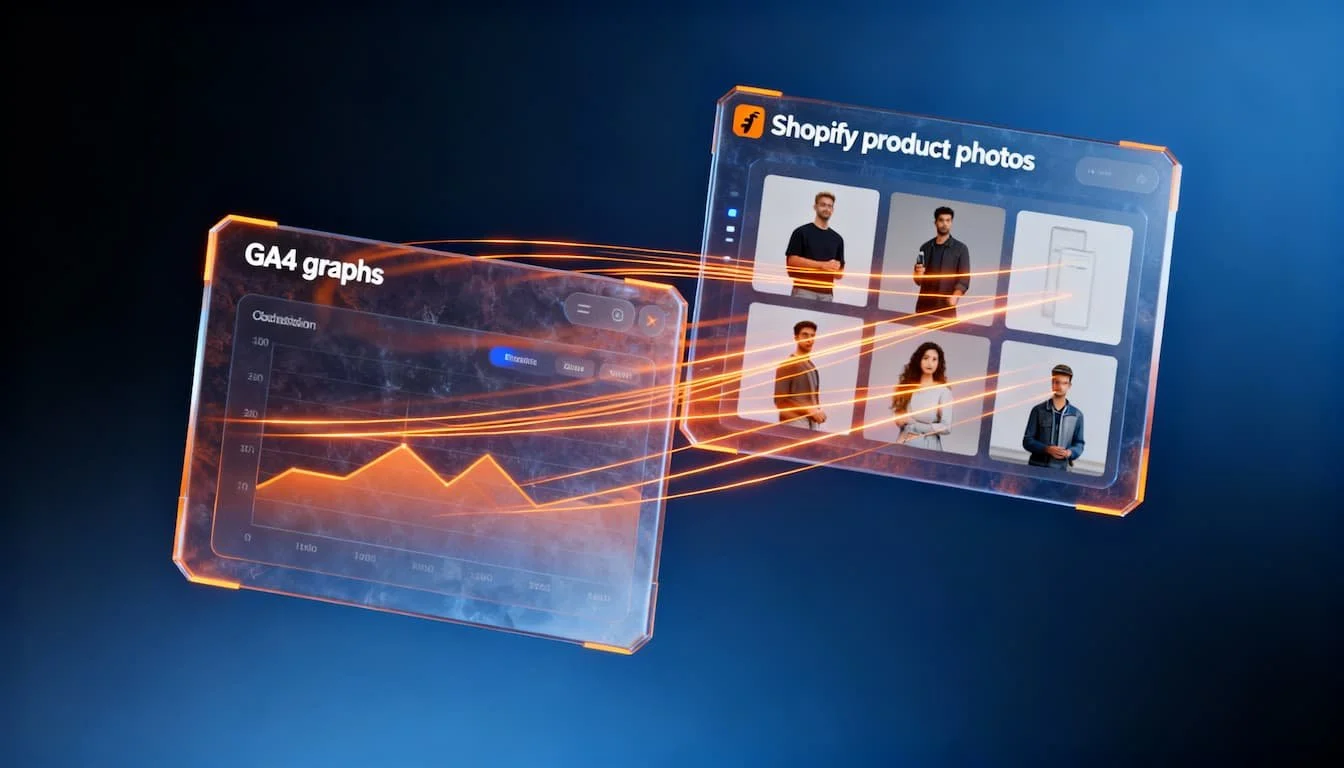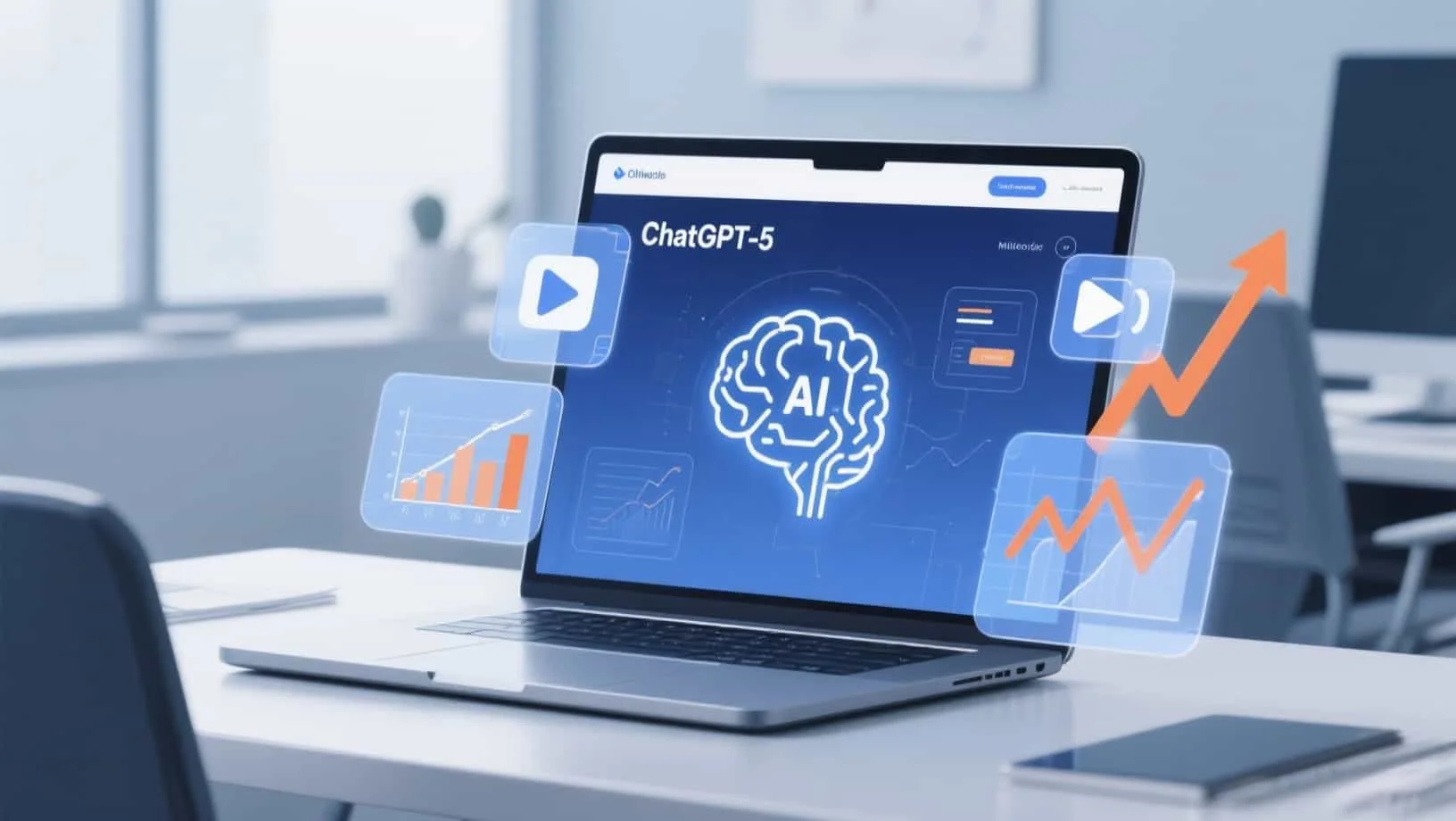AI copywriting versus human creativity: the ultimate test
It's 2026, and the boundaries are blurring rapidly. Where we used to immediately recognize AI texts by their stilted style and predictable patterns, advanced prompt engineering today ensures copy that is barely distinguishable from human work.
- Boundaries are blurring rapidly: Advanced prompt engineering makes AI copy barely distinguishable from human texts
- 90% of marketers use AI: Increase of 64.7% in 2023, the revolution lies in prompt engineering craftsmanship
- Humans still win at: Strategic brand positioning, cultural nuances, crisis communication, emotional storytelling
- Hybrid approach successful: Phase 1 AI for speed/volume, Phase 2 human refinement for tone/strategy
- Recognizing AI signals: Predictable structures, general statements, perfectly grammatical sentences without natural variation
- 42% better ROI: Teams that combine AI-human workflows report significantly higher return on investment
Time for a fair confrontation: can we still see who is holding the pen?
Test yourself with these two opening sentences for a B2B landing page:
Variant A: "Transform your business processes today with our innovative cloud solutions and experience the difference immediately."
Variant B: "Your competitor made their first million yesterday. You're still puzzling with Excel sheets from 2019."
One of these sentences was written by a copywriter with ten years of experience. The other rolled out of ChatGPT after a smart 47-word prompt.
(You can find the answer at the bottom of this article.)
Why 2026 will be the tipping point
90% of content marketers plan to use AI for their marketing in 2026, a 64.7% increase from 2023. But it's no longer about simply typing "write an ad". The revolution lies in prompt engineering – the craft of guiding AI to write as you would.
“73% of marketing professionals use AI for content creation, but only 12% fully rely on AI without human review.”
Source: HubSpot - State of AI in Marketing Report 2024
The invisible evolution of AI copy
Compare this development to photography. Where previously only professionals made high-quality photos, today anyone with a smartphone can create images that compete with studio photography. AI copywriting is undergoing the same democratization.
Teams that combine AI-human workflows report 42% better ROI on content. The secret? They don't replace human creativity, but amplify it.
Concrete examples from practice
Traditional prompt: "Write an email for customer retention"
AI output: "Thank you for your trust in our company. We appreciate your loyalty and would like to keep you informed of our latest developments."
Advanced prompt: "Write a personal email to Marie, an account manager who purchased our software three months ago. She recently expanded her team from 5 to 12 people. Use a warm but professional tone, subtly refer to her growth, and proactively offer support. Write as if you have known her for years."
AI output: "Hi Marie, I saw on LinkedIn that your team has grown significantly – from 5 to 12 people in three months, impressive! This growth naturally brings new challenges. How is the onboarding of your new colleagues going in our system? If you run into any issues, please let me know. We recently launched a team dashboard that is perfect for teams of your size."
The difference? The second prompt transforms AI from a generic text generator into an advanced writing assistant that masters context, tone, and timing.
“AI copywriting tools can increase conversion rates by 38%, but only when combined with human strategy.”
Source: Neil Patel Blog - AI Copywriting Tools Guide
Where human copywriters still win
Despite all the progress, there are still areas where human creativity is irreplaceable:
Strategic brand positioning
AI can optimize texts for better findability, but strategic brand positioning requires years of experience and intuition.
Cultural nuances and timing
When Spotify launches its annual "Wrapped" campaign, it's not just about presenting data. It's about perfectly timing collective nostalgia, responding to social trends, and creating shareable moments. This strategic timing and cultural sensitivity remain human assets.
Crisis and reputation management
During a PR crisis, every word counts. Here, nuances between "we take responsibility" and "we acknowledge our role" can make the difference between recovery and further damage. AI-generated content scores 28% better in conversion rates, but in crisis management, the risk of misinterpretation is too great.
“The best AI-generated content comes from prompts written by experienced copywriters who understand what works.”
Source: Orbit Media - AI Content Writing Best Practices
The hybrid approach: the best of both worlds
Successful companies in 2026 won't choose between AI or humans, but will strategically combine both:
Phase 1: AI for speed and volume
Product descriptions
Email variations for A/B tests
SEO-optimized blog concepts
Social media captions
Phase 2: Human refinement
Brand-specific tone of voice
Emotional storytelling
Strategic decisions
Quality control
"Better prompts are the key to better AI results," emphasizes Lisa van der Berg, content strategist at Digital Growth Partners. "But writing a good prompt requires just as much creativity as the content itself."
Practical signals to recognize AI copy
Although AI is becoming increasingly human-like, there are still telling signals:
Structural patterns
Excessive use of colons and lists
Predictable sentence structure (heading - explanation - benefit - CTA)
Repetition of synonymous words within a short text
Content-related signals
General statements without specific examples
Missing personal opinions or points of view
Perfectly grammatical sentences without natural "errors"
Emotional markers
Emotions that are named instead of evoked
Lack of subtle irony or puns
Too neutral tone, even on controversial topics
The impact on SEO and conversion
AI copywriting tools improve ad CTRs by 38% and lower the cost-per-click by 32%. For e-commerce optimization, this means concrete benefits:
Faster A/B tests: Instead of waiting days for new variants, you can test within hours
Scalable personalization: Unique product descriptions for thousands of items
SEO efficiency: Structured data and rich snippets are automatically optimized
“AI can recognize and replicate patterns, but true creativity and brand strategy still require human input and intuition.”
Source: MarketingProfs - AI and Human Creativity in Marketing
Ethical considerations and transparency
The discussion about transparency is increasing. Should you mention when content is AI-generated? 35% of companies are concerned about their technical capacity to optimally utilize AI, but ethical questions are becoming increasingly prominent.
Legal aspects
Who is responsible for incorrect AI-generated claims?
How do you relate to copyright with AI-assisted content?
What standards apply to AI transparency?
Brand integrity
Does AI-generated content align with your brand values?
How do you maintain an authentic brand personality?
When do you consciously opt for human input?
Looking ahead: what will 2026 bring?
Experts predict further integration between AI and human creativity. Generative Engine Optimization (GEO) will become as important as traditional SEO. AI tools are learning not only to write, but also to think strategically.
“The future lies not in AI versus humans, but in AI-human collaboration that combines the best of both worlds.”
Source: HubSpot Blog - AI-Human Collaboration in Content Marketing
Get started with smart AI copywriting
Ready to take the plunge? Start with these concrete steps:
Beginner level
Experiment with ChatGPT - Start with simple prompts for social media posts
Build a prompt library - Collect working formulas for different content types
Test systematically - Compare AI output with handwritten variants
Advanced level
Learn advanced prompt engineering - Discover how context and personas improve your results
Integrate with AI marketing strategies - Combine copywriting with automated workflows
Measure and optimize - Track conversions and CTRs to refine your approach
“AI democratizes access to good copy, but premium brand positioning and strategic messaging remain human specialties.”
Source: Content Marketing Institute - AI Content Marketing and Human Creativity
The answer to the test
Variant A came from ChatGPT – despite the professional tone, it contains typical AI signals such as "transform" and "experience the difference directly."
Variant B was written by a human copywriter – the specific context ("Excel sheets from 2019") and confrontational tone are still typical human choices.
Were you right? Then you have a keen eye for nuances. If not? Don't worry – even marketing professionals struggle with this daily.
Ready to use AI for your copywriting? Discover our AI services or schedule a strategy session to explore how smart content can boost your conversions.

🚀 More leads, higher conversion, better ROI
This article gave you insights. Now it's time for action. Whether you want to build a profitable webshop, generate more revenue from performance marketing or SEO, or grow with AI-marketing - we'll help you move forward concretely.
💬 Discuss your challenge directly with Frederiek: Schedule a free strategy session or send us a message
📧 Prefer to email? Send your question to frederiek@clickforest.com or call +32 473 84 66 27
Strategy without action remains theory. Let's take your next step together.
Frequently asked questions about AI copywriting in 2026
-
AI copywriting uses artificial intelligence to generate commercial texts. Modern tools such as ChatGPT, Claude, and Jasper analyze prompts and produce content that is increasingly difficult to distinguish from human work.
-
No, but it fundamentally changes their role. AI takes over repetitive tasks, while people focus on strategy, creativity, and brand positioning. Successful copywriters learn to master AI as a professional tool.
-
Pay attention to predictable structures, general statements without specific examples, and perfectly grammatical sentences without natural variation. However, well-instructed AI is becoming increasingly difficult to recognize.
-
Primary benefits include speed (400% faster production), cost savings (50% lower cost per article), scalability for large campaigns, and improved SEO optimization. AI excels in repetitive tasks and data-driven personalization.
-
AI still struggles with strategic brand positioning, cultural nuances, crisis communication, and genuine emotional connection. Originality and authentic brand personality also remain challenges.
-
Start with free tools like ChatGPT, build a library of working prompts, and test systematically. Learn prompt engineering basics and experiment with different content types before moving to professional tools.
-
This depends on transparency and usage. Mentioning AI assistance is becoming increasingly important, especially for important content. Focus on AI as a tool for better content, not as a replacement for human responsibility.
-
ChatGPT remains the market leader (77.9% market share), followed by Claude (28%) and Gemini (42% among enterprises). The choice depends on your specific needs, budget, and integration requirements.
-
AI can automatically optimize content for keywords, generate structured data, and produce bulk content for better topical authority. However, strategic keyword targeting and semantic optimization still require human expertise.
-
Expect further integration with marketing automation, better brand personality recognition, and the emergence of Generative Engine Optimization. By 2030, hybrid workflows will be the norm, with AI and humans working seamlessly together.
Sources and references
AI-copywriting statistics and trends:
Siege Media: "50 AI writing statistics to know in 2025" - https://www.siegemedia.com/strategy/ai-writing-statistics
Coursera: "What is AI copywriting? Exploring a potential $10 trillion impact" - https://www.coursera.org/articles/ai-copywriting
DesignRush: "What is AI copywriting? Complete guide for 2025" - https://www.designrush.com/agency/content-marketing/copywriting/trends/ai-copywriting
Human versus machine analysis:
Brand New Copy: "Artificial intelligence (AI) and the future of copywriting" - https://brandnewcopy.com/ai-and-the-future-of-copywriting/
Filthy Rich Writer: "Will AI take over copywriting in 2025?" - https://filthyrichwriter.com/can-copywriting-software-replace-skilled-copywriters/
Content by Kelsey: "The truth about AI copywriting: enhancing efficiency or replacing human writers?" - https://www.contentbykelsey.com/blog/the-truth-about-ai-copywriting-enhancing-efficiency-or-replacing-human-writers
Prompt engineering best practices:
ProfileTree: "Prompt engineering in 2025: trends and best practices" - https://profiletree.com/prompt-engineering-in-2025-trends-best-practices-profiletrees-expertise/
Lakera: "The ultimate guide to prompt engineering in 2025" - https://www.lakera.ai/blog/prompt-engineering-guide
PromptHub: "Google's prompt engineering best practices" - https://www.prompthub.us/blog/googles-prompt-engineering-best-practices
AI tools and applications:
Hootsuite: "The 10 best AI copywriting tools (free and paid!) in 2025" - https://blog.hootsuite.com/ai-copywriting/
Humanlinker: "How to use AI for your copywriting in 2025?" - https://www.humanlinker.com/blog/how-to-use-ai-for-your-copywriting-in-2025











